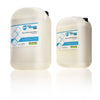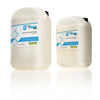Metamerism

In the context of the printing industry, metamerism describes a situation whereby prints of an original and a matched ink, when viewed under a standard illuminant (D50 for example) prove a good visual match.
Whereas, if the same samples are viewed under an alternative illuminant (a fluorescent light source for example), the visual match is poor. This is called a 'metameric match'.
To understand what causes a match to be metameric, it’s important firstly to appreciate that it occurs not as result of a variation in the state of the viewer (in this case the human eye), but a change in the viewing conditions.
It’s important to establish that different illuminants (light sources) have a specific spectral energy distribution, or wavelength and that any object (in this case a colour sample) interacts with the illuminant uniquely, absorbing some and reflecting the remaining spectral energy and thereby determining the colour of the object as interpreted by the human brain and eye.
Ordinarily, when matching process inks, if the pigments used to mix the original and the match are the same, then although the colour constancy may change under different illuminants, the visual match between the two samples should remain good.
However, there may be circumstances when the colour matcher needs to substitute alternative pigments in order to accommodate particular resistance properties or improve lightfastness – as determined by the end use of the printed job.
In these situations, a visual match can still be achieved when viewing under illuminant D50 for example. This is because although the substitute pigments will interact differently with the illuminant by absorbing different segments of spectral energy than the original pigments will, the spectral curves of the original and the match can correspond sufficiently to allow the viewer (human brain and eye) to average out the differences of spectral information across the red green and blue regions that it recognises and “see” a good visual match.
A real difference between the original and the match becomes clear however, when viewed under an alternative illuminant: a fluorescent light source for example, as it has a markedly different spectral energy distribution to that of a standard D50 light source.
Due to the introduction of this further variable of an alternative light source, there are likely to be insufficient correlations between the spectral curves of the original and match and therefore the necessary latitude for the brain and eye to average out the differences in spectral information as previously described and a difference in the colour, or a poor visual match will result.
It’s not possible to eliminate metamerism entirely when substitute pigments are employed. And another problematic area is when the colour matcher is asked to match an ink to a textile, plastic, or ceramic. In these circumstances the experience of the colour matcher and the aid of a spectrophotemeter can minimise the metameric effect.
Need some help with your litho print consumables?
We supply a full range of litho print supplies, including Standard Pantone Ink, Pantone Matching Guides, Litho Print Chemistry, Litho Printing Blankets and OverPrint Varnishes.
- Clive Harper






